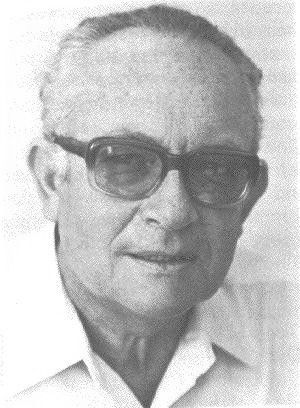| Profile | Major Works | Resources |
Don Patinkin, 1922-1995.

Trained at Chicago under the tutelage of Oskar Lange and half-participating in the goings-on at the Cowles Commission next door, Don Patinkin emerged as one of the foremost authorities on monetary theory in the post-war year. His remarkable dissertation, Money, Interest and Prices (1956, greatly expanded in its 2nd edition in 1965) is an incomparable tour-de-force, plumbing the depths of economics and drawing up points which would later be of interest to many different fields - such as a disequilibrium formulation of macroeconomics, the problems arising from the distinction between stocks and flows, stability and path-dependency of equilibria, etc. His 1956 treatise remains a unique example of Neo-Keynesian theory at its best.
Patinkin's central thesis in 1956 (already announced in a series of articles from 1948 to 1954) was the integration of monetary theory and Walrasian value theory. This task not only became central to Neo-Keynesian economics but was also instrumental in giving birth to various strands of Post-Walrasian theory. That integration, which had long eluded the marginalists, rested on the abandonement of Say's Law and the placing of money in the utility function - thus violating the principle of homogeneity of demand. The Quantity Theory, Patinkin claimed, indeed could not work without that violation.
The "Patinkin Controversy" highlighted the glaring inability of Neoclassical theory to satisfactorily incorporate money and led to a reassessment of the micro-macro link by the Post-Walrasians in the 1960s and 1970s as well as numerous attempts to reformulate a modern theory of money and credit.
Patinkin was also instrumental (1948, 1949) in constructing the "rigidity" interpretation of Keynes that was to become central to the Neo-Keynesian synthesis. While recurrently engaged in the monetary debate he began, Don Patinkin, in his later years, became a remarkable scholar of J.M. Keynes, producing two remarkable books (1976, 1982) and a series of papers which challenged the Post Keynesian monopoly on interpretation. His parallel work on the history of the Chicago School (1981) also challenged Friedman's claims that he was working in its "oral tradition". Don Patinkin worked at the Hebrew University of Jerusalem for most of his post-Chicago life.
|
Major works of Don Patinkin
|
HET
|
|
Resources on Don Patinkin
|
All rights reserved, Gonšalo L. Fonseca
